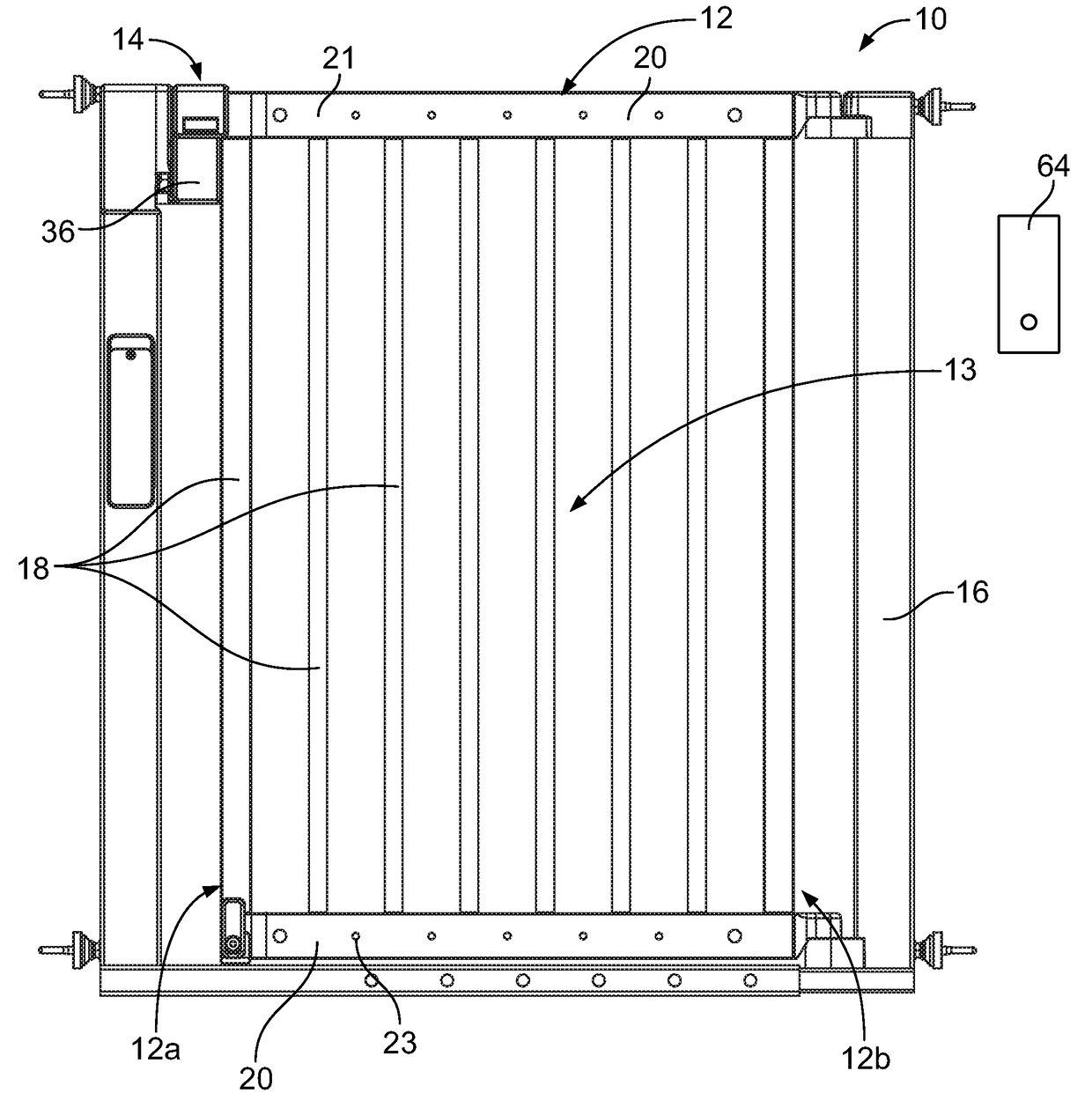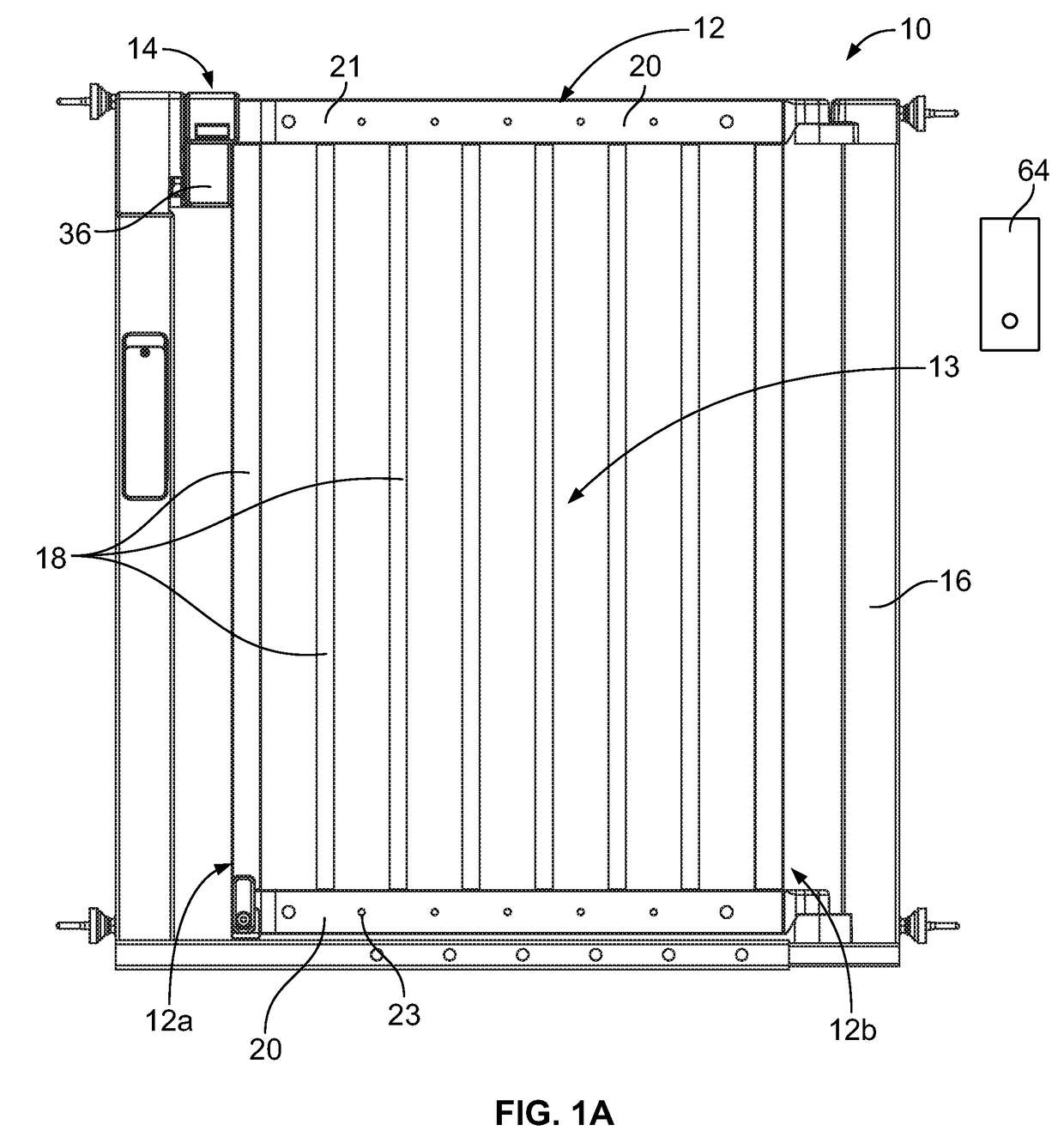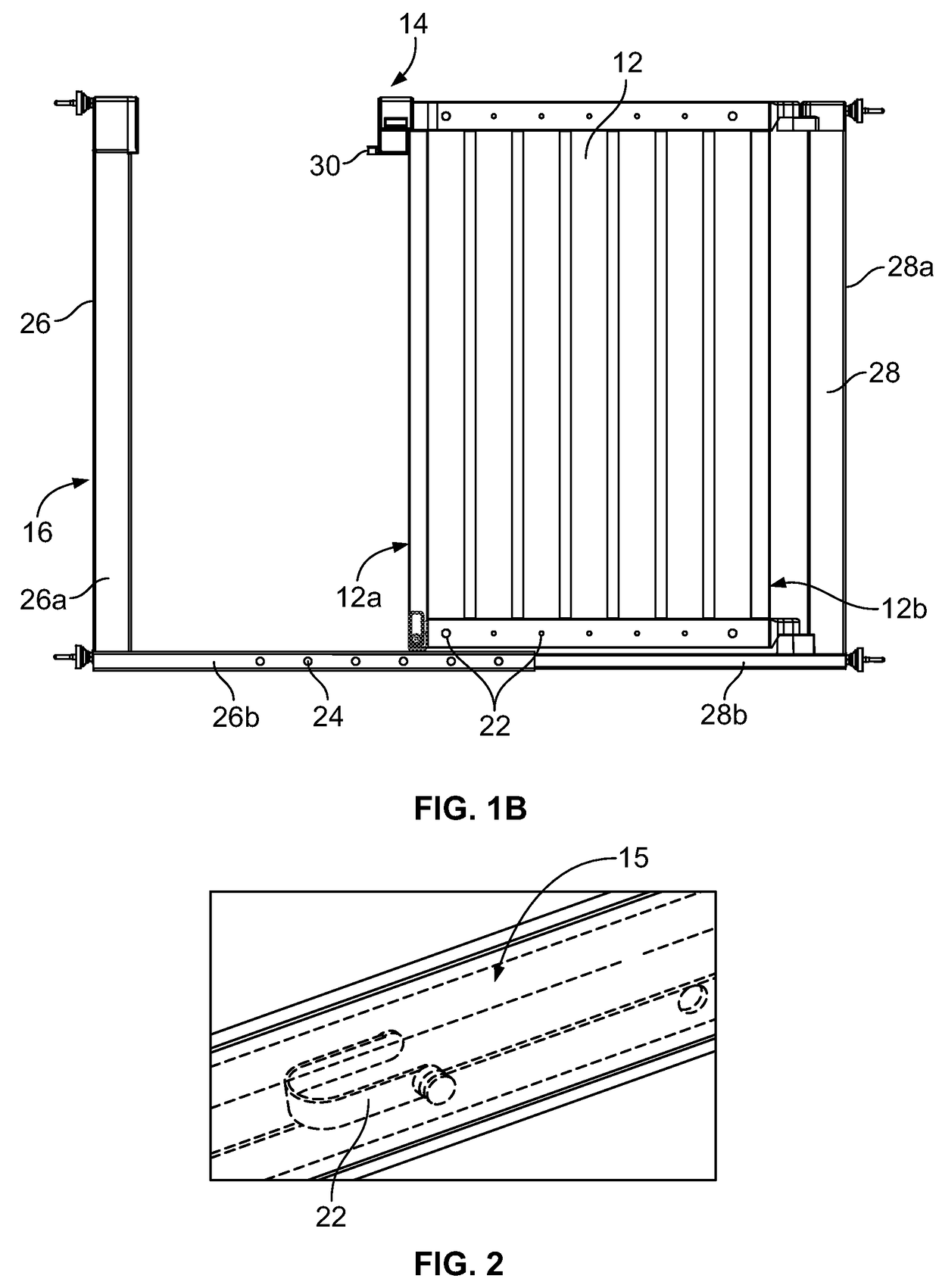Gate assembly employing a dual actuator latching mechanism
a latching mechanism and gate technology, applied in the field of safety gates, can solve the problems of not being designed, wagnitz does not teach or disclose, and significant dexterity
- Summary
- Abstract
- Description
- Claims
- Application Information
AI Technical Summary
Benefits of technology
Problems solved by technology
Method used
Image
Examples
Embodiment Construction
[0030]The following description is provided to enable those skilled in the art to make and use the described embodiments set forth in the best modes contemplated for carrying out the invention. Various modifications, however, will remain readily apparent to those skilled in the art. Any and all such modifications, equivalents, and alternatives are intended to fall within the spirit and scope of the present invention.
[0031]A gate assembly 10, as seen in FIG. 1A, is generally seen to include a pivoting gate element 12 secured to a doorway and / or passageway and employing a dual actuator latching mechanism 14 for simple yet unique remote and manual latch release, freeing the gate to swing to an open position, and automatic re-lock when the gate swings back to the closed position. In the present described embodiment, the gate assembly most reliably re-locks automatically if the gate is first swung open to 45 degrees or more before the gate is slammed closed. Additionally, the gate assemb...
PUM
 Login to View More
Login to View More Abstract
Description
Claims
Application Information
 Login to View More
Login to View More - R&D
- Intellectual Property
- Life Sciences
- Materials
- Tech Scout
- Unparalleled Data Quality
- Higher Quality Content
- 60% Fewer Hallucinations
Browse by: Latest US Patents, China's latest patents, Technical Efficacy Thesaurus, Application Domain, Technology Topic, Popular Technical Reports.
© 2025 PatSnap. All rights reserved.Legal|Privacy policy|Modern Slavery Act Transparency Statement|Sitemap|About US| Contact US: help@patsnap.com



